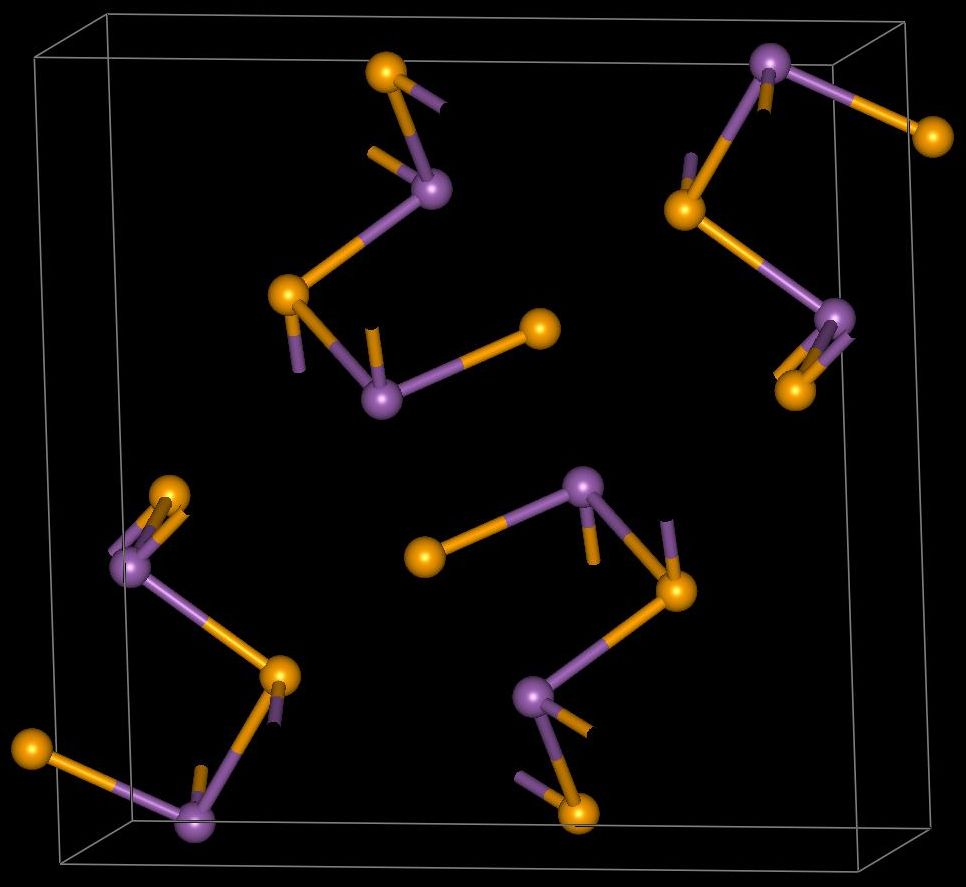

In the experiment, the researchers used nitrogen and ambient air plasma to enhance the material’s photoelectroactivity in the hydrogen evolution reaction (image: Structure of antimony tri-selenide/Voutsas G.P., Papazoglou A.G., Rentzeperis P.J./Wikipedia)
In an experiment resulting from collaboration between two FAPESP-supported research centers, a material was modified for use in solar-driven water splitting to produce hydrogen.
In an experiment resulting from collaboration between two FAPESP-supported research centers, a material was modified for use in solar-driven water splitting to produce hydrogen.

In the experiment, the researchers used nitrogen and ambient air plasma to enhance the material’s photoelectroactivity in the hydrogen evolution reaction (image: Structure of antimony tri-selenide/Voutsas G.P., Papazoglou A.G., Rentzeperis P.J./Wikipedia)
Agência FAPESP* – Research conducted in Brazil at the Center for Development of Functional Materials (CDMF) and the Center for Innovation in New Energies (CINE) has developed a novel approach to the plasma treatment of antimony tri-selenide (Sb2Se3) films that makes their surface hydrophilic, i.e. attracted to water molecules and easily dissolved by water, instead of hydrophobic (repelled by water).
The study is described in detail in an article published in Chemical Engineering Journal.
The material has properties that enable its use as a photocathode to produce hydrogen gas by the solar-driven water splitting method. The hydrophobic surface of antimony tri-selenide compromises its performance in the photoelectrochemical cell, diminishing its capacity to convert light (solar energy) into chemical energy. Production of hydrogen using solar energy is important because hydrogen gas is a strong candidate for the production of electricity in vehicles and elsewhere.
CDMF is a Research, Innovation and Dissemination Center (RIDC) funded by FAPESP and hosted by the Federal University of São Carlos (UFSCar). CINE is an Engineering Research Center (ERC) supported by FAPESP and Shell.
In the experiment, the researchers used nitrogen and ambient air plasma to enhance the material’s wettability (its ability to maintain contact with a solid surface due to intermolecular interaction) and thereby increase its photoelectroactivity in the hydrogen evolution reaction. The upshot is a possible novel strategy to improve the wettability of semiconductors.
The article “Plasma treatment of electrodeposited Sb2Se3 thin films for improvement of solar-driven hydrogen evolution reaction” can be read at www.sciencedirect.com/science/article/abs/pii/S1385894724010118.
*With information from CDMF’s Press Office.
Republish
The Agency FAPESP licenses news via Creative Commons (CC-BY-NC-ND) so that they can be republished free of charge and in a simple way by other digital or printed vehicles. Agência FAPESP must be credited as the source of the content being republished and the name of the reporter (if any) must be attributed. Using the HMTL button below allows compliance with these rules, detailed in Digital Republishing Policy FAPESP.





